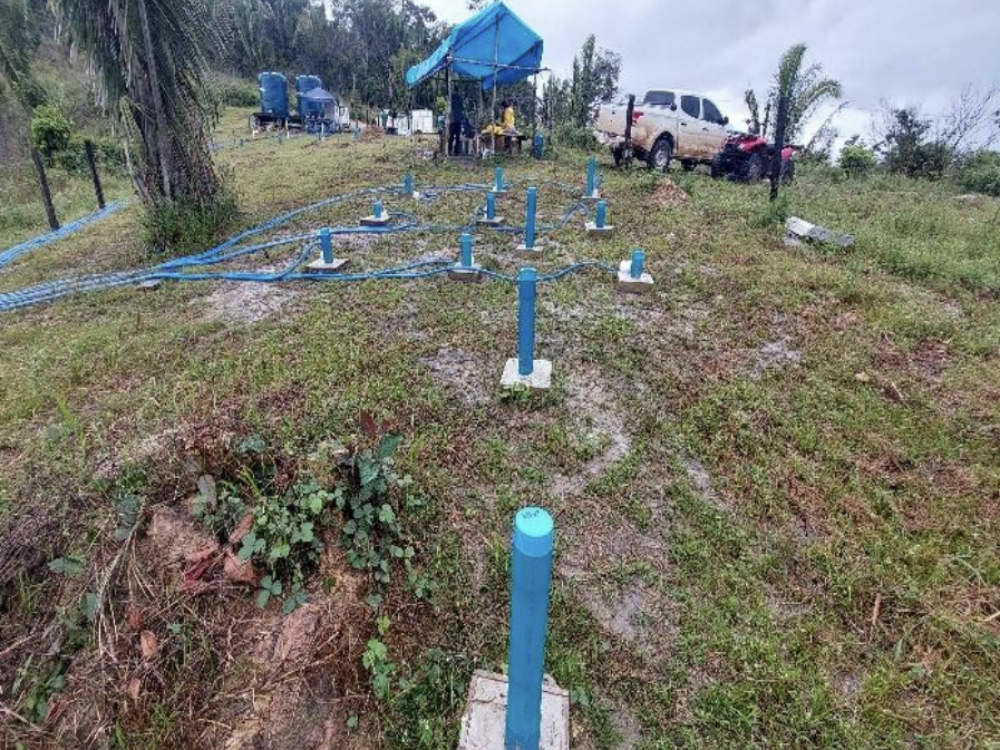Brazilian Critical Minerals starts ISR field trial at Ema

- Brazilian Critical Minerals starts ISR field trial at its Ema rare earths project in Brazil
- Trial will validate the project’s suitability for low-cost ISR recovery of REEs
- It will confirm hydraulic conductivity, demonstrate clay permeability and collect metallurgical samples
Special Report: Brazilian Critical Minerals has started the crucial in-situ recovery field trial at its Ema rare earths project that will validate its amenability to the low-cost mineral extraction process.
The field trial conducted by global ISR leader WSP Brazil and overseen by CERN Environmental follows successful recent trials conducted by ANSTO and approval from the Environmental Protection Institute of Amazonas state. It will see the injection of magnesium sulphate into the shallow clay horizons at Ema.
It seeks to validate various deposit-specific characteristics of Ema, and to collect a database of geotechnical, hydrogeological and metallurgical data to evaluate the deposit conditions, and optimise the proposed ISR mining at the project.
Previous ANSTO testwork of material from Brazilian Critical Minerals’ (ASX:BCM) Ema project – resource of 943Mt grading 716ppm total rare earth oxides – indicated its soft, friable, quartz rich nature results in high recoveries of key magnet rare earths over short leaching duration periods, driving highly favourable operating costs.
“24 months ago, we discovered the Ema deposit, 12 months ago we released a maiden 1Bt MRE, 3 months ago we delivered an ultra-low CAPEX/OPEX Scoping Study after extensive metallurgical testing,” managing director Andrew Reid said.
“Today we have commenced in-situ trials with the planned objectives to provide validation that the Ema deposit possesses the characteristics necessary for a full scale commercial ISR operation.
“This trial is a further step advancing on the existing testwork completed within Brazil and ANSTO which underpinned the scoping study delivering a project NPV of US$355M (even at current depressed spot prices), with a project capital requirement of just US$55M.
“The data collected will confirm hydraulic conductivity, demonstrate the clay permeability and allow us to collect metallurgical samples for further leach optimisation work planned.
“On the back of the expected positive results, the company plans to produce a mixed rare earth carbonate (MREC) from the collected solution. This MREC will then be provided to strategic partners for quality control testing and to progress the execution of offtake agreements.”

Listen: Andrew Reid chats with Barry FitzGerald
In a previous instalment of the Explorers Podcast, host Barry FitzGerald spoke with BCM managing director Andrew Reid about the company’s scoping study on its Ema project in Brazil, highlighting ultra-low capital and operating costs.
In-situ recovery
In-situ recovery involves pumping a solution underground to dissolve minerals and extracting them – a process that is generally cheaper, more efficient, uses less water and causes minimal surface disruption.
It is mainly suitable for ionic adsorption clay-hosted plays that dominate rare earths production in southern China, Malaysia and parts of Myanmar – about 30% of the world’s total output.
The process significantly simplifies and removes at least 60% of the typical process flowsheet and much of the complexity when compared to traditional methods of rare earth clay extraction.
It has seen limited use in commercial-scale projects outside China.
Ema is believed to be suitable for ISR as it has unique geological characteristics achieving high recoveries utilising an environmentally responsible reagent, magnesium sulphate, with the lowest capital intensity requirement of any western rare earth project.
BCM’s trial will enable an assessment of the hydrogeological conditions and obtain valuable information on the leach characteristics of the rare earths.
Collected solutions rich in rare earths will then be used to generate a final MREC.
Key objectives include confirming the hydraulic connectivity of the test injection holes within the mineralised zone, which is a key criteria for the successful deployment of ISR, demonstrate the suitability of ISR for Ema, and collect metallurgical samples for leaching characteristics.
This article was developed in collaboration with Brazilian Critical Minerals, a Stockhead advertiser at the time of publishing.
This article does not constitute financial product advice. You should consider obtaining independent advice before making any financial decisions.
Related Topics

UNLOCK INSIGHTS
Discover the untold stories of emerging ASX stocks.
Daily news and expert analysis, it's free to subscribe.
By proceeding, you confirm you understand that we handle personal information in accordance with our Privacy Policy.








